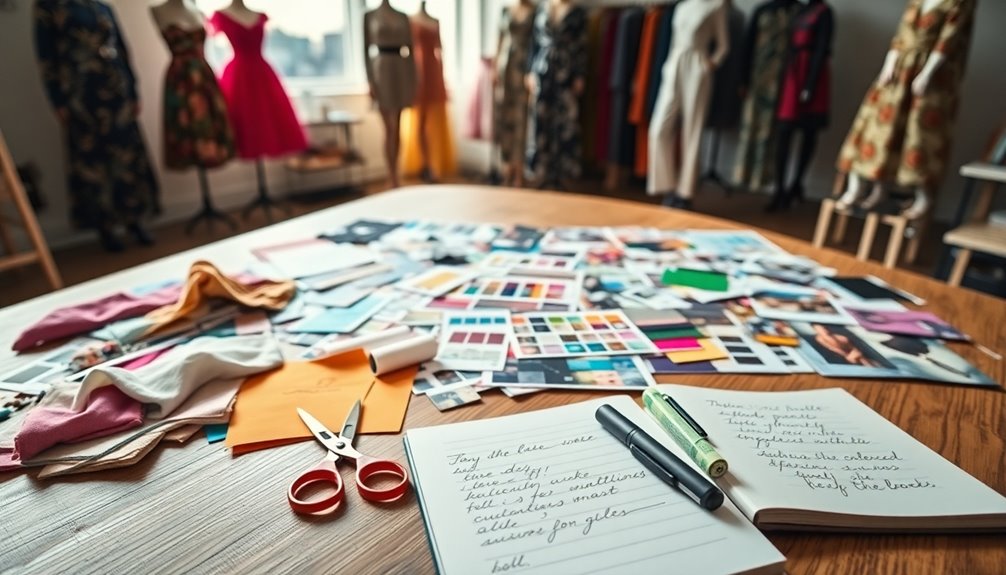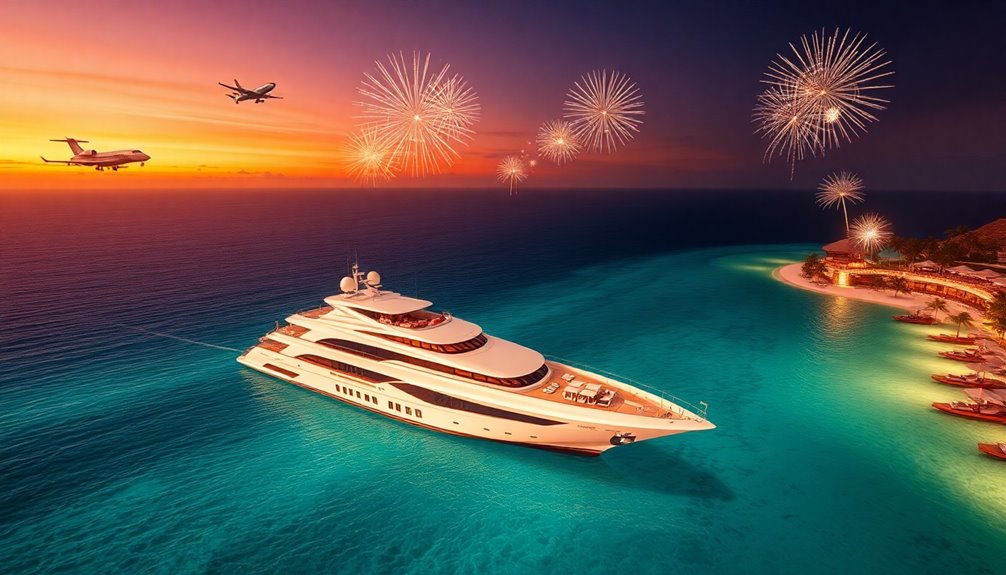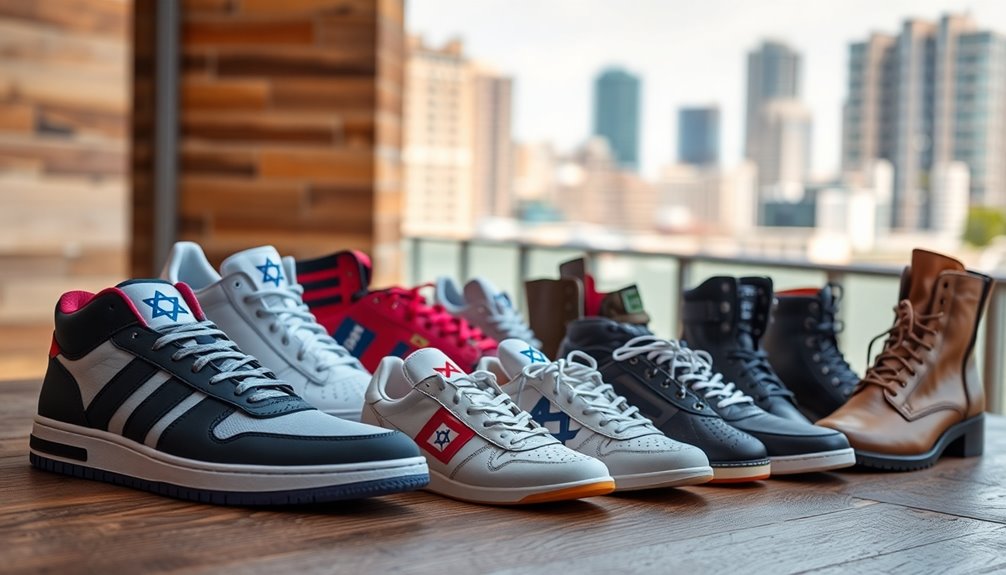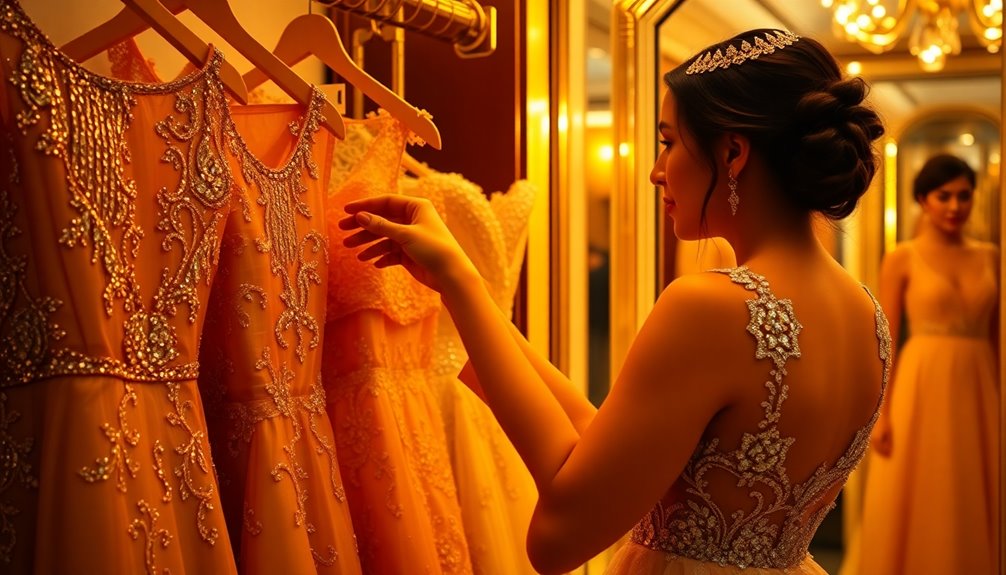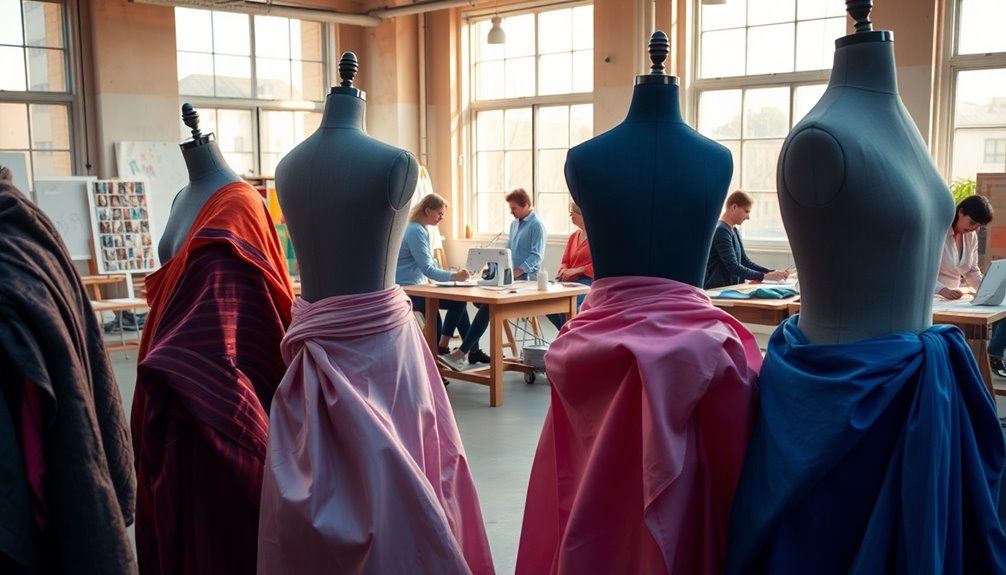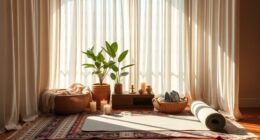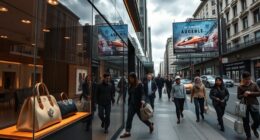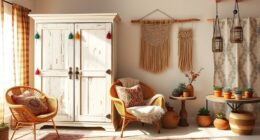You can release your creativity with fashion mood boards by using them to visualize your ideas and concepts. They help you establish a clear vision for your projects, whether it's a new clothing line or a photoshoot. Gather inspiration from various sources like magazines, social media, and nature. Choose between digital and physical boards based on your style and preference. Regular updates keep your boards fresh and relevant, so collaboration remains seamless. Each piece you select should contribute meaningfully to your theme. Keep exploring, and you'll discover new ways to enhance your creative journey alongside these vibrant tools.
Key Takeaways
- Mood boards visually express concepts, helping to clarify and communicate your fashion design vision effectively.
- Gather diverse inspirations from various sources to stimulate creativity and explore unique design ideas.
- Curate impactful elements mindfully to align your selections with your project's theme and objectives.
- Utilize digital tools for easy organization and sharing, enhancing collaboration and feedback among team members.
- Stay updated with current trends and consumer preferences to ensure your designs resonate with your target audience.
Understanding Mood Board Purpose

Creating a mood board is all about establishing a clear vision and purpose. You need to define your objective, whether it's for a clothing line, a seasonal vibe, or a photoshoot concept.
Understanding your target audience is essential; consider who'll view your board—clients, team members, or collaborators. Think about how you'll use the mood board too, whether for concept development, communication, or marketing.
Decide if you'll represent themes through literal colors and materials or convey an inspirational vibe. Focus on thematic elements like specific colors, styles, or emotions that guide your overall aesthetic.
Gathering Visual Inspiration
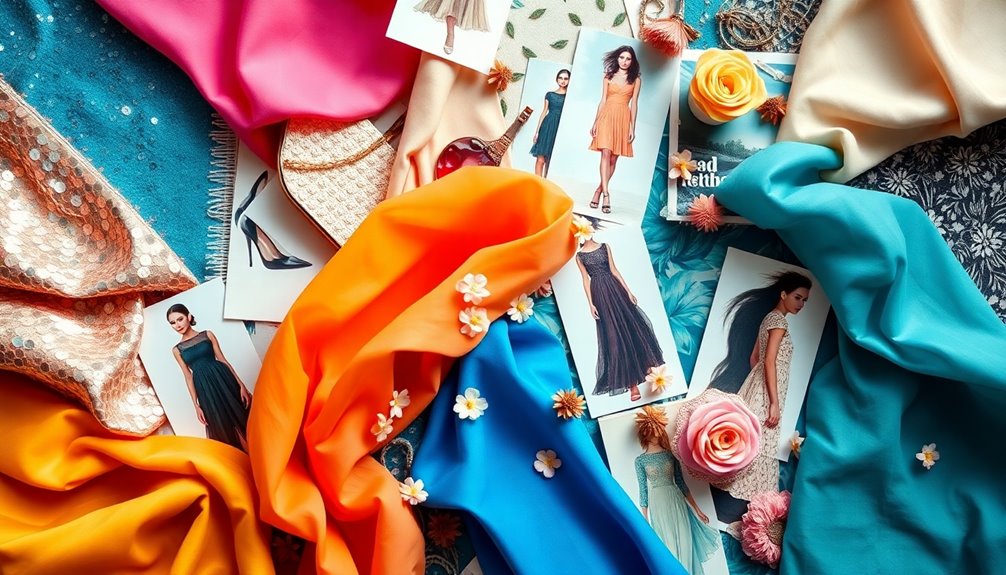
Inspiration is the lifeblood of a compelling mood board, and gathering visual elements plays an essential role in the process. Start by exploring diverse sources like fashion magazines, stock photography sites, and social media platforms. Look for images that resonate with your vision, whether they're photographs, illustrations, or even tactile materials.
Don't hesitate to draw inspiration from art, architecture, and nature, as these can deepen your board's aesthetic. Digital tools like Pinterest help you organize your finds efficiently, while platforms like Canva or Milanote allow for easy visualization.
Remember to focus on textures, patterns, and colors that enhance your theme, ensuring every element contributes to the overall mood you're aiming to evoke. Let your imagination run wild!
Selecting the Right Medium

When it comes to mood boards, the medium you choose can considerably impact how your vision is communicated and perceived. Think about whether you want a physical, digital, or hybrid approach. Each medium offers unique advantages that can enhance your creative process.
- Physical boards let you experience textures and colors firsthand, using magazine clippings and fabric swatches.
- Digital boards provide flexibility, allowing for easy edits and sharing with your team.
- Hybrid boards merge the best of both worlds, combining tactile elements with digital organization for maximum creativity.
Select the medium that aligns with your workflow and vision to guarantee your mood board effectively captures the essence of your project.
Utilizing Mood Boards Effectively

Throughout your project, utilizing mood boards effectively can serve as an essential reference point that keeps your design direction consistent.
Start by ensuring every element on your board has a clear purpose, guiding viewers through your vision. Use your mood board to streamline the creative process, helping reconcile any contradicting ideas among team members. Incorporating unique spaces can also inspire innovative design approaches that resonate with your theme. Additionally, consider incorporating lighting design to create the desired ambiance in your spaces. Choosing the right projector type can greatly enhance the visual experience of your design presentations. Heat pumps, for example, utilize energy efficiency techniques that can inspire sustainable design choices in your projects.
Regularly update your board to reflect new trends and insights, keeping your inspiration fresh. Gather visual elements that resonate with your theme, including colors, textures, and patterns.
Whether you choose a physical or digital format, make sure the medium aligns with your workflow. Ultimately, your mood board shouldn't only inspire but also enhance collaboration, ensuring everyone stays aligned with the project's objectives. Additionally, incorporating effective preparation can maximize consultation outcomes and ensure a more cohesive design approach.
Maintaining Consistency and Relevance
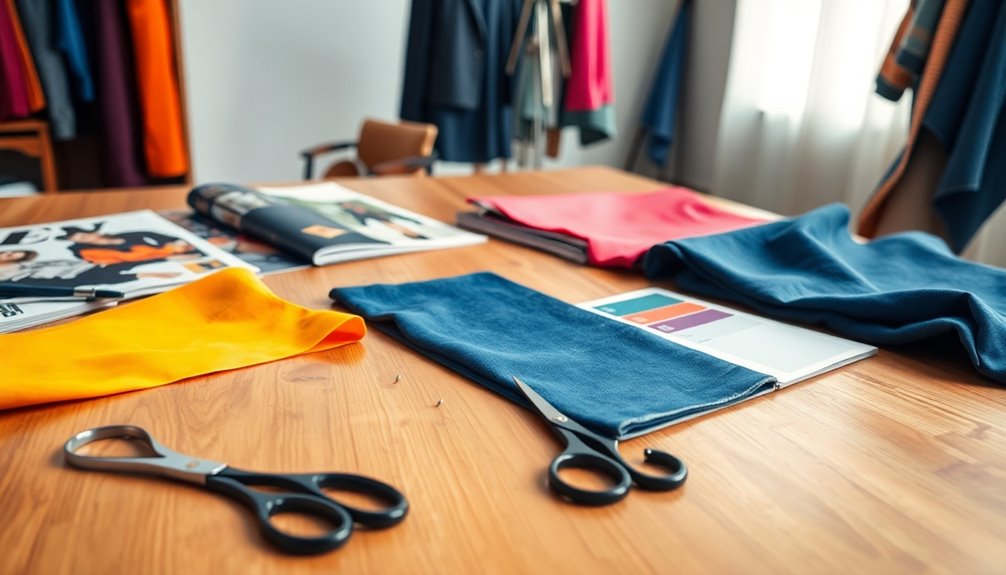
Maintaining consistency and relevance in your mood board is essential for a cohesive design process. It helps you stay aligned with your project's theme and direction.
To achieve this, keep these points in mind:
- Curate images that reflect your target audience's preferences, ensuring they resonate with their style. Understanding store hours can enhance your shopping experience for materials that fit your design.
- Regularly update your board to incorporate new trends and fresh ideas, keeping your inspiration alive. Consider drawing inspiration from home security system trends that cater to modern aesthetics and functionality, such as the best home security systems that emphasize user-friendly design.
- Eliminate distractions by removing elements that no longer serve your vision, allowing your main theme to shine.
- Awareness of pitfalls such as neglecting self-care can further enhance your creativity and focus during the design process.
Achieving Visual Cohesion

Achieving visual cohesion in your mood board is essential for creating a unified aesthetic that effectively communicates your project's theme. Focus on balancing colors, textures, and patterns to enhance harmony. Simplify your elements to eliminate clutter and keep the main theme clear. Layer strategically to emphasize key images while grouping similar elements for better organization. Incorporating high-quality content enhances the overall impact of your mood board, making it more effective in conveying your vision. Additionally, embracing positive thinking can inspire greater creativity and innovation in your design process. Engaging in mindfulness practices can also help clear your mind and boost your creative flow.
Here's a quick reference table to guide you:
| Element | Purpose | Example |
|---|---|---|
| Color Palette | Sets mood and tone | Warm tones for cozy vibes |
| Textures | Adds depth and interest | Soft fabrics vs. hard surfaces |
| Imagery | Visual representation of theme | Fashion photos, sketches |
Adapting Mood Boards for Versatility

Adapt your mood boards for versatility by incorporating elements that can easily shift between multiple projects and themes. This flexibility not only saves time but also sparks new ideas.
To achieve this, consider including:
- Neutral color palettes that harmonize with various styles and concepts.
- Timeless textures like denim or leather that complement diverse fashion statements.
- Iconic imagery that evokes strong emotions and resonates across different audiences. Incorporating essential oils into your mood board can enhance the overall sensory experience, adding depth to your creative vision. Additionally, essential oils provide natural antibacterial and antifungal properties, which can also inspire themes of cleanliness and freshness in your designs. Moreover, the use of pleasant scents can stimulate creativity and uplift your mood, making your creative process more enjoyable. Including butter alternatives in your designs can also reflect modern dietary trends and cater to diverse consumer preferences.
Furthermore, using mindful art of decluttering techniques can help you curate your mood board elements more effectively, ensuring each piece serves a purpose in your creative process.
Frequently Asked Questions
How Do I Know if My Mood Board Is Effective?
To know if your mood board's effective, look for clarity and cohesion in its theme and elements. Each visual should resonate with your intended message and purpose.
If it inspires and aligns your team, you're on the right track. Check if it communicates the desired mood and connects with your target audience.
Regularly update it to keep it fresh and relevant, ensuring it continues to spark creativity and maintain focus throughout your project.
Can Mood Boards Help With Personal Style Development?
Absolutely, mood boards can be a game-changer for your personal style development. They help you visualize the outfits, colors, and patterns you're drawn to, creating a cohesive look that reflects your personality.
What Mistakes Should I Avoid When Creating Mood Boards?
When creating mood boards, avoid cluttering them with too many elements. Stick to a focused theme and limit your color palette to maintain cohesion.
Don't forget to take into account your target audience—make sure your visuals resonate with them.
Also, steer clear of using outdated images or trends; keep it fresh and relevant.
Finally, guarantee every piece has a purpose; aim for clarity to effectively communicate your vision.
How Often Should I Update My Mood Board?
Think of your mood board as a garden; it needs regular tending to thrive. You should update your mood board at least every few weeks or whenever inspiration strikes.
Fresh visuals keep your ideas alive and relevant, ensuring they align with current trends. Regular updates also help you reconcile any new concepts that emerge, maintaining a clear focus on your project's evolving direction.
Stay engaged and let your creativity bloom!
Can I Use Mood Boards for Non-Fashion Projects?
Absolutely, you can use mood boards for non-fashion projects!
They're a fantastic way to visually convey ideas, whether you're working on interior design, branding, or even event planning. By gathering images, colors, and textures that resonate with your vision, you create a cohesive representation of your concept.
This tool helps you stay organized, communicate effectively with your team, and guarantee that every element aligns with your overall theme.
Conclusion
As you immerse yourself in the world of fashion mood boards, imagine the possibilities that await you. Each visual element you choose opens a door to creativity, guiding your designs with precision and passion. With every collage you craft, you're not just assembling images; you're weaving a narrative that speaks to your audience. So, are you ready to release your creativity and transform your projects? The journey starts now—what masterpiece will you create next?
